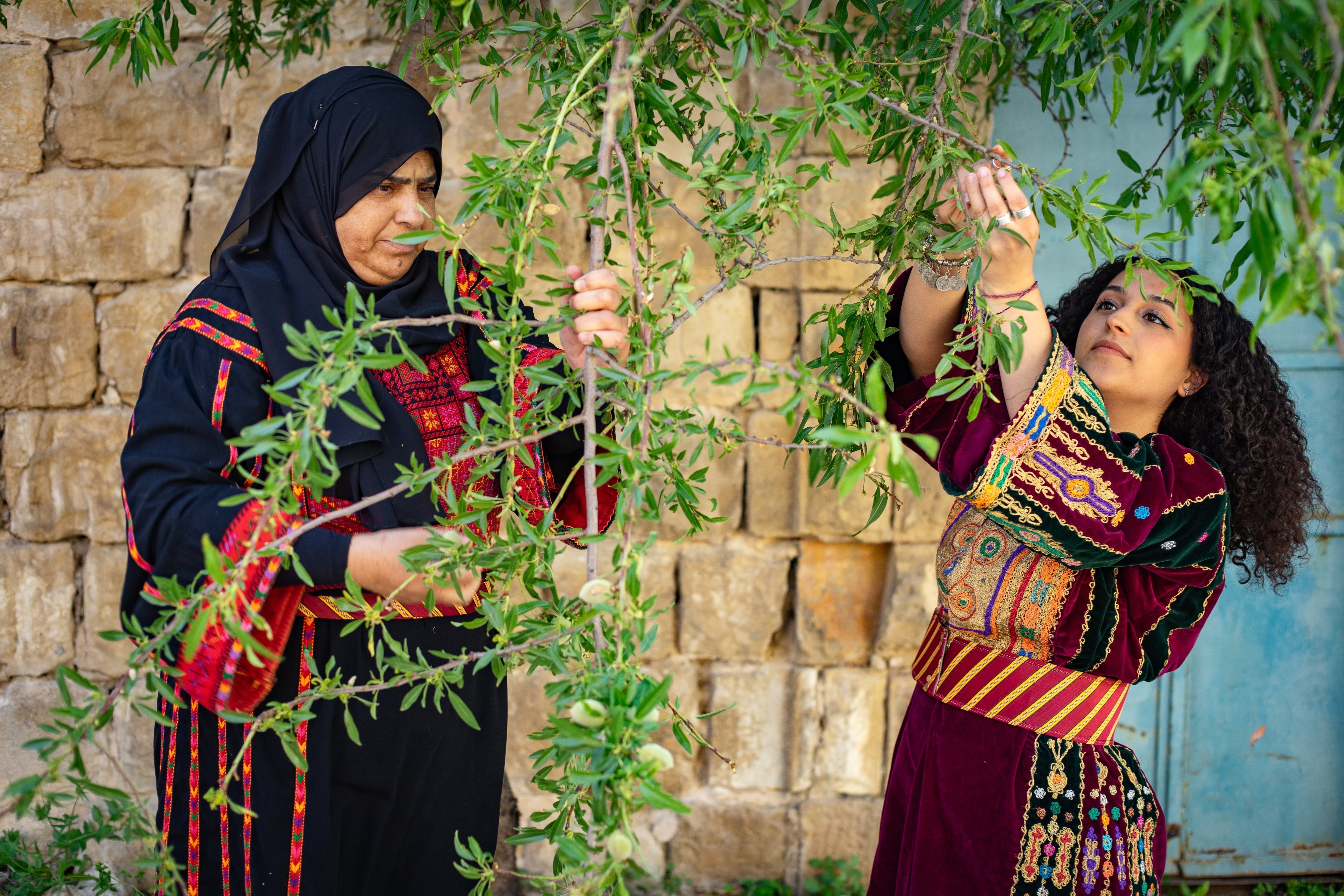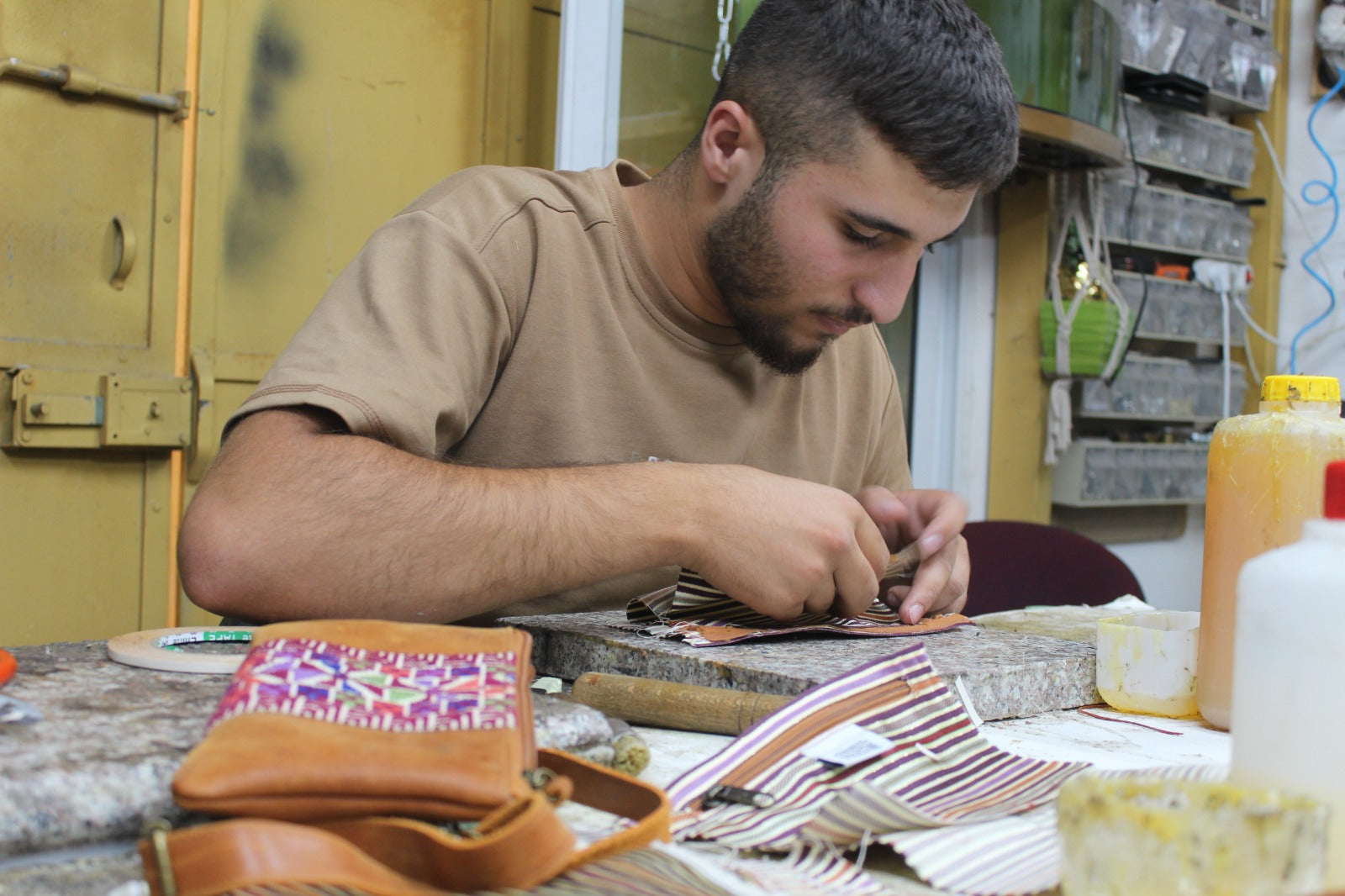Whether you’re exploring Palestinian culture or reconnecting with your roots, here’s a quick guide to this powerful piece of living history. At Handmade Palestine, we celebrate and preserve Palestinian heritage through traditional craft. At the center of this work is the thob, the iconic, hand-embroidered dress worn by Palestinian women for generations.
1. What is the Palestinian Thob?
The thob (also spelled thobe or thawb) is a long, dress made from linen or cotton, often stitched with meaningful patterns that reflect a woman’s region, status, and story.
Each thob is embroidered using tatreez, a centuries-old needlework tradition passed from mother to daughter. These dresses are not only beautiful but deeply symbolic — a living archive of culture, identity, and resistance.

2. How far back does the Thob tradition go?
Tatreez-like embroidery dates to the 11th century in Alexandria, with garments from the 13th century resembling Ramallah-style Thobs . By the 19th century, tatreez had firmly emerged in rural Palestinian culture, with women dyeing threads using plants like madder and indigo.
The Nakba of 1948 disrupted these traditions; displaced women often couldn’t invest in complex Thobs. However, embroidery projects in refugee camps began integrating tatreez onto less time-intensive accessories like shawls and purses.
3. What motifs were commonly found on Thoab?
Palestinian tatreez (cross‑stitch embroidery) on the Thob is rich in imagery, with each motif carrying deep cultural meaning. Here's a look at common and meaningful motifs:
The Cypress Tree (Sarwa)—often depicted in symmetrical branches—symbolizes eternity, resilience, and connection to the land, especially prevalent in Ramallah and Hebron styles.
Floral and rosette motifs, including roses, starflowers, and crushed‑sugar rosettes, represent beauty, protection, and continuity. These motifs guard against the evil eye and express regional identity: Bethlehem calls them “crushed sugar,” Jerusalem sees them as “roses,” and Gaza treats them as “stars” .
The Olive Branch, symbolizing peace and steadfastness, is another iconic image—and a testament to the enduring Palestinian landscape .
Geometric patterns—including diamonds, triangles, and zigzags—serve both decoration and cultural language, conveying fertility, protection, harmony, and regional origin .
Lastly, motifs like the key and Pasha’s Tent reflect profound collective memories—the key for the right of return, and Pasha’s Tent recalling Ottoman-era grandeur.
Together, these motifs form a textile archive—each stitch weaving personal, communal, and historical narratives into the fabric of Palestinian identity.

4. How did the Thob become a symbol of resistance?
Post-1967, tatreez evolved into a patriotic language. During the First Intifada, dressmakers stitched flag colors and national motifs into Thobs, turning everyday garments into political statements that respected censorship laws.
5. How is tatreez practiced and preserved today?
Recognized by UNESCO in 2021, tatreez is experiencing a revival. Workshops across the diaspora and grassroots groups—like Tatreez Collective—teach this art to younger Palestinians. Wafa Ghnaim’s book Tatreez & Tea documents the patterns born from displacement along with Margarita Skinner's Palestine Embroidery Motifs book you can find here.
6. How has tatreez moved from garments into accessories?
Originally stitched on Thobs, tatreez now embellishes a plethora of everyday items:
-
Shawls – like rainbow-on-black, brown Najaf and mint shawls
-
Pouches, wallets, coin purses – with motifs like Pasha’s Tent
-
Jewelry & accessories – earrings, key rings, bag straps stamped with village tatreez patterns
This shift began in the 1960s in refugee camps and continues today—tatreez has become a portable, modern artifact of Palestinian identity.

7. Why are Thobs valued and important today?
Thobs are deeply valued and important today because they carry a rich cultural and historical significance. They are not just garments, but symbols of identity, heritage, and resilience. For Palestinians, the Thob represents a connection to their land, history, and family traditions. It is a way to honor and preserve cultural practices that have been passed down through generations, especially in the face of displacement and political challenges. The intricate embroidery, or tatreez, often tells a personal or regional story, linking the wearer to their roots and community.
In addition, the Thob has become an important symbol of resistance and solidarity. During times of conflict, it has been used as a quiet but powerful assertion of Palestinian identity and rights. By wearing or preserving a Thob, Palestinians continue to assert their cultural pride and resilience, even in the diaspora. Today, these garments are also valued for their craftsmanship, with many artisans and designers reviving traditional techniques while blending them with contemporary fashion, making them meaningful both as cultural artifacts and as fashion statements.











Leave a comment
This site is protected by hCaptcha and the hCaptcha Privacy Policy and Terms of Service apply.